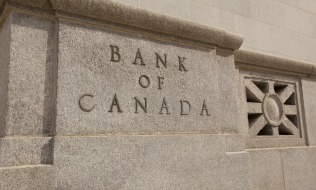

The Bank of Canada’s governor says today’s era of stubbornly low interest rates means it’s time to revisit retirement planning and temper business investment expectations.
In prepared remarks of a speech Tuesday in Quebec City, Stephen Poloz laid out recommendations on how to adapt to low interest rates that he expects will linger for a long time.
Among the biggest impacted by this low-growth world are retirees.
“One group that has certainly been affected by lower for longer is savers, particularly seniors who planned to finance their retirement with interest income generated by a life of working hard to build savings. I have heard from many Canadians who are rightly worried about their ability to live off their savings and who are seeking a return to higher interest rates,” Poloz said.
He understands these concerns, he added, noting that demographic and economic changes, along with the low interest rates, “have upended the calculations that many Canadians made in planning for retirement. That is not their fault.”
Read: 56% of Canadians over 50 don’t have a retirement savings plan: survey
That means savers need to adjust their plans and plans for retirement, the central bank governor said.
“The difficult reality is that savers must adjust their plans. That may mean some combination of putting aside more funds, working a little longer than planned or changing the mix of investments. There are no easy answers, particularly for some who have already retired,” Poloz said.
The bank’s benchmark interest rate has remained at a low level of 0.5 per cent for more than a year and it’s not expected to start climbing any time soon.
Poloz urged businesses to invest more to help the economy, saying the current climate means they must lower their expectations when it comes to rates of return on investments. The main cause of weak business investment has been the high level of uncertainty, he added.
The central banker said governments should cobble together a mix of policies to boost the country’s economic output — even if each opportunity on its own offers only a slight improvement.
Read: How Canadian pension funds can help Ottawa’s infrastructure agenda
“In the current and prospective environment, four per cent will probably turn out to be a pretty good return,” Poloz said.
He said policy-makers must continue to pursue new trade opportunities at home and abroad, invest more on infrastructure and tweak tax and immigration policies to help promote the growth of new firms.
“In a lower-for-longer world, these are opportunities we simply cannot afford to miss,” Poloz said. “With a projection that Canada’s economic potential is likely to grow by only around 1.5 per cent, which is not very inspiring, we need to take every decimal point of potential growth more seriously than we have in the past.”
At a news conference, Poloz outlined the everyday costs of living with higher inflation. CIBC economist Royce Mendes says in a note this suggests the central banker would “prefer using his expanded toolkit of negative rates and large-scale asset purchases to combat the next slowdown, rather than run a higher inflation rate through the cycle, as that would see consumers and businesses incur the costs of this insurance even when the economy was healthy.”
The BoC is evaluating a new inflation target and “while the official decision on the inflation renewal agreement has yet to be announced, the Governor’s comments today place even less likelihood on a change,” Mendes says.
This article was originally published on Benefits Canada‘s companion site, Advisor.ca
